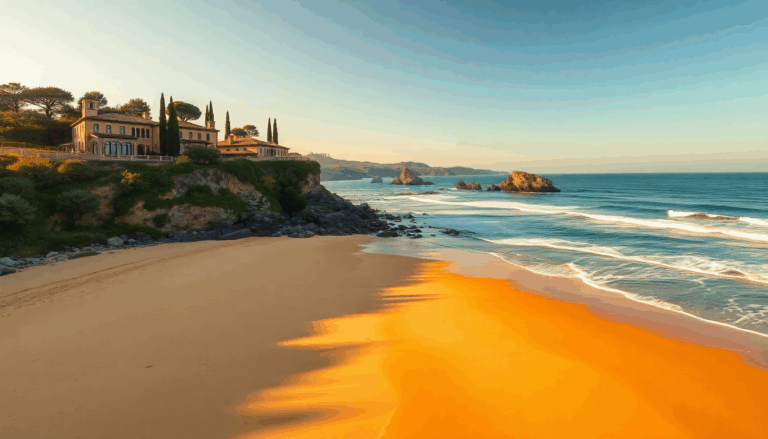The allure of Tuscany’s coastline is hard to resist. Who wouldn’t dream of waking up to the gentle sound of waves and the warm sun on their skin? Yet, just like any investment, the costs of purchasing a seaside property can vary widely from one location to another. In this article, we’ll
dive into the most expensive areas for buying a seaside home in Tuscany, explore what drives these price differences, and offer some practical insights for potential investors eager to navigate this competitive market.
Emerging Trends in Tuscany’s Seaside Real Estate
Tuscany is famous for its stunning landscapes and exceptional quality of life, making it a top choice in Italy for second-home purchases. Did you know
that the average price per square meter in Tuscany ranks among the highest in the country, especially in its coastal towns? The provinces of Lucca, Grosseto, and Livorno lead the pack, boasting property values that significantly surpass the national average. But what exactly makes these regions so appealing to buyers?
Take Forte dei Marmi, for example. This exclusive seaside hotspot ranks second nationwide for property prices,
with an eye-watering average of €9,469 per square meter. Known for its luxurious villas and international allure, Forte dei Marmi captivates visitors with its elegance, top-notch services, and close proximity to the beach. Is it any wonder tourists and investors alike are drawn to this slice of paradise?
Yet, the spotlight doesn’t shine solely on Forte dei Marmi. The province of Grosseto boasts several other upscale locales. For instance, Giglio Island attracts buyers with an average price of €5,164 per square meter, making it one of the priciest second-home destinations in Italy. Close behind are Castiglione della Pescaia and Monte Argentario, priced at €4,488 and €4,410 per square meter, respectively. These areas not only offer breathtaking beauty but also deliver a quality of life and services that are simply outstanding.
Business Case and Economic Opportunities
Among the standout locations is the Argentario Peninsula, where properties offer breathtaking views and stunning natural backdrops. Castiglione della Pescaia appeals to those seeking a mix of history and coastal charm, featuring a beautifully preserved historic center and efficient transport links. For investors, these attributes signal compelling opportunities.
In the Lucca province, Pietrasanta shines with an average price of €4,674 per square meter. This town, celebrated for its artistic heritage, perfectly merges culture and coastal living, attracting both Italian and foreign investors. Meanwhile, the Livorno province, highlighted by Elba Island, offers slightly more moderate prices while still being a favorite for seaside homes. Elba, with its gorgeous beaches and intriguing history, is undeniably a desirable destination.
Overall, Tuscany is well represented in the top 50 most expensive locations for second homes in Italy, with eight towns exceeding €3,500 per square meter. This trend underscores the region’s strong appeal in the real estate market. Factors such as natural beauty, availability of amenities, and high demand contribute to the sustained premium prices, solidifying Tuscany’s status as a premier destination for those in search of a seaside retreat.
How to Implement Your Investment Strategy
If you’re considering diving into the Tuscan seaside real estate market, it’s crucial to approach the process with thorough research and planning. Understanding market dynamics, property values, and future growth potential is vital for making informed decisions. Collaborating with local real estate experts and tapping into resources like market reports can provide valuable insights into current trends and emerging opportunities.
Moreover, prospective buyers should weigh the implications of property ownership in coastal areas, including potential regulations, maintenance costs, and seasonal fluctuations in occupancy. Aligning your investment goals with personal preferences—like desired amenities and lifestyle—can lead to greater satisfaction in the long run.
Investing in a seaside property in Tuscany isn’t just a financial decision; it’s a chance to embrace the lifestyle that this enchanting region offers. By making wise choices and planning strategically, investors can secure a slice of paradise that serves as both a vacation getaway and a potential for long-term appreciation.
Roadmap for Future Investments in Tuscany
Looking to the future, Tuscany’s seaside real estate market shows promise, fueled by ongoing interest from both domestic and international buyers. As environmental considerations increasingly influence purchasing decisions, properties that prioritize sustainability and energy efficiency may become even more attractive.
Investors should keep a close eye on infrastructure developments—like transport links and local amenities—which can significantly impact property values. Additionally, understanding the local cultural context and community dynamics can enrich the investment experience.
In summary, Tuscany’s coastal real estate market presents an exciting opportunity for those looking to invest in second homes. By carefully considering the factors that influence property prices and staying attuned to future trends, investors can make decisions that align with both their financial goals and their desire for a dream lifestyle.

